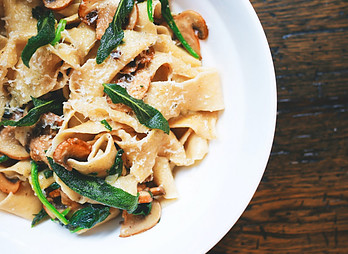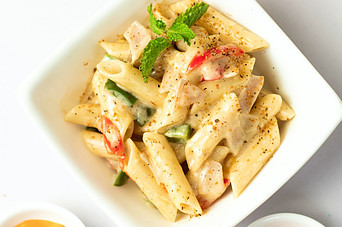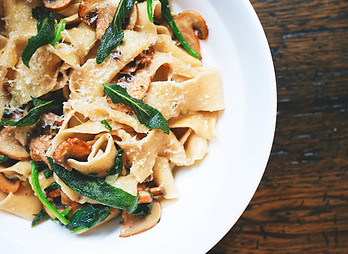
According to the American Heart Association, eating whole grains like brown rice, barley, oats, quinoa, and millet can reduce your risk of heart disease. Whole grains contain more fiber and nutrients than refined grains, which have had their bran removed during processing. This means that you get more bang for your buck when you eat them! Whole grains also help keep blood sugar levels steady throughout the day, which helps prevent diabetes. They’re also easier to digest than refined grains. Pasta is good for you in many ways, including the fact that it can help you cut down on your overall calorie intake. It’s also a great source of fiber and vitamins, which can help to reduce cholesterol levels and increase heart health. Finally, it’s important to know that pasta is a good source of iron and folate. Iron helps with red blood cell production while folate can help prevent neural tube defects during pregnancy. One of the most important benefits that pasta offers is that it’s an excellent source of protein. As a result, pasta helps to maintain a balanced diet and can be used as a part of a weight loss plan. The type of carbohydrate found in pasta provides a steady supply of energy for the body. Pasta is also high in fiber which helps to maintain digestive health. The carbohydrate in pasta isn’t metabolized like other carbs, so it doesn’t spike your blood sugar levels and cause cravings like other foods to do. In addition to all these benefits, pasta is low in fat and cholesterol, making it an excellent food for people with heart problems or who want to lose weight. Always check labels of pasta brands as they do vary in ingredients and nutritional benefits.

Rice has long been considered a staple food around the world. But is pasta really better than rice? Rice is a grain native to Asia, where it was cultivated over 4,000 years ago. Today, it remains the primary source of calories for billions of people worldwide. In addition to being versatile, inexpensive, and nutritious, rice also boasts a rich culinary history. Pasta is a type of starch derived from durum wheat flour. It’s often served as a side dish or main course, depending on its preparation. There are several types of pasta, including spaghetti, linguine, macaroni, and ravioli. Pasta is typically made with semolina flour (or sometimes cornstarch), water, salt, eggs, and olive oil. The dough may be rolled out by hand into sheets or cut into shapes using special cutting tools. After cooking, pasta can be dressed with sauces such as tomato sauce, pesto, cheese, butter, cream, or meat-based ragùs. One study found that people who ate pasta had 25 percent lower total cholesterol levels than rice. And this was found even though the subjects on both diets were eating similar amounts of protein. Another study found that people who ate more pasta lost weight, even though they ate the same amount of calories as those who didn’t eat any pasta. So, is pasta better than rice? It depends on how you look at it! In general, it’s better to eat fewer carbsand more protein, so if you’re going for a low-carb diet, then yes, pasta would be your go-to food choice (even if you’re still eating rice). If you’re looking for healthy carbs to turn to after a long day of working out or when you want some comfort food, then no; the answer is still no because many other options are healthier than your go-to carb staple.

Many experts say that pasta is a great option for losing weight. It’s high in fiber, lean protein, and relatively low in calories. It can be eaten by itself or as part of a healthy diet that includes fruits, vegetables, whole grains, and lean proteins like chicken or beef. It’s also a filling food, so you’ll feel satisfied after eating it. The option of adding fresh veggies such as broccoli, green beans, asparagus or fresh brussel sprouts. There are many different types of pasta, and each one offers a different health benefit. For example, brown rice spaghetti offers an extra protein boost, while traditional spaghetti has more fat content than white spaghetti. Additionally, there are many ways to prepare pasta, making it easy to add variety to your diet. With the right ingredients (such as whole wheat flour), you can make homemade noodles instead of store-bought ones. Try out a homemade pasta sauce like one made with tomatoes, garlic, olive oil, basil, and fresh oregano.

Is Pasta Good for You? If you’re looking for a healthy way to eat, then pasta is your answer over rice. Of course it always depends on the product and cooking method. Remember eating foods high in carbs are recommended to eat in moderation.


